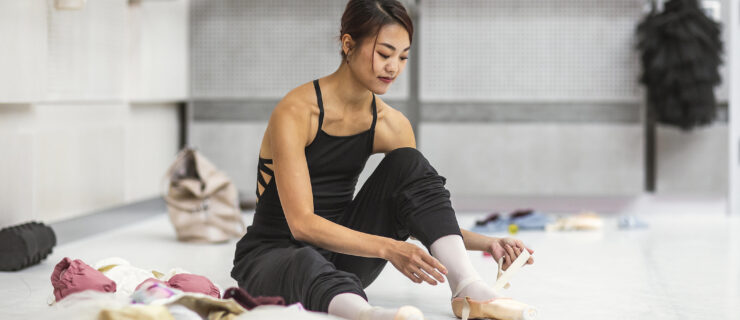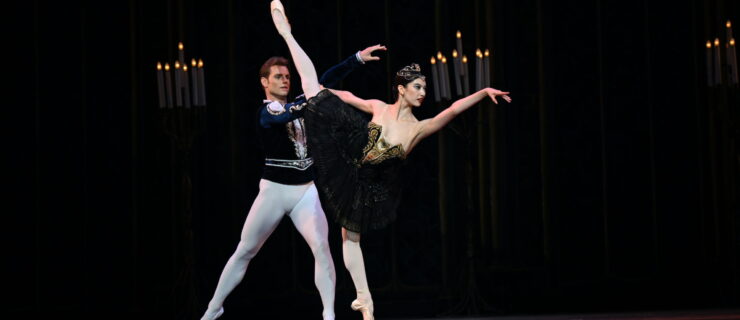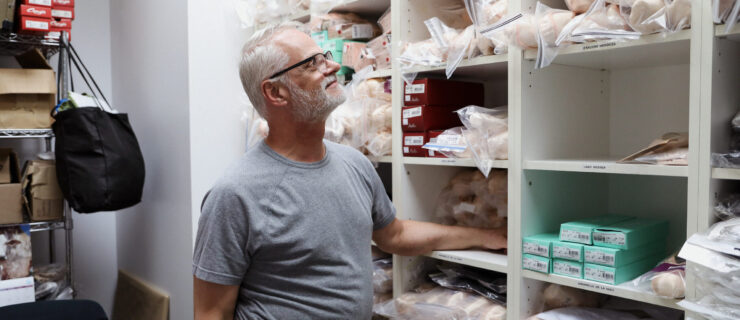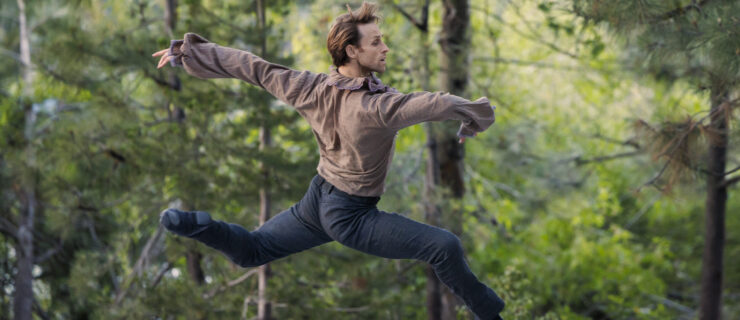Basic Training
When Kansas City Ballet came to New York City last September for a one-night-only performance (see review on page 48), dancer Aisling Hill-Connor also made time to demonstrate for us how she applies basic stage makeup. Hill-Connor learned her method while still a student at North Carolina School of the Arts and has been perfecting it during her seven years at KCB. She takes the size of the theater into consideration, because “our stage is a little bit closer [to the audience], so we don’t necessarily need something so thick [as pancake].” (Hill-Connor uses commercial makeup instead.) For another option, we asked American Ballet Theatre makeup master Riva Pizhadze to provide expert advice for dramatic makeup that will also work in the biggest of houses, including how she applies professional products. “Nothing should be too heavy,” says Pizhadze. “Everything has to be matching. It should look like you have makeup on, but [natural].”
BASE
Cover the entire face. This will provide the canvas and hold for all the other makeup you apply. Touch up with concealer to cover spots and circles under the eyes. Blend powder last.
Master tip:
You can mix shades to make the perfect match for your skin. Be sure to blend it so that the neck is not obviously a different color from the face.
EYES
Though many dancers apply shadow first, Hill-Connor starts with eyeliner. “[With eyeliner,] I usually follow the line of my eye until it starts to dip down, and then I start to go a little further out to make my eyes look a little bigger,” says Hill-Connor. “The bottom doesn’t go out as far.” Then white eyeshadow, which is a base for the rest of the eye makeup and creates a good contrast. Brown shadow accentuates the eyelid crease and the area slightly above. (For a basic face, always use neutral shades rather than greens or blues.) White pencil also extends the look of the eye, when filling in between the eye and eyeliner. Finish with false eyelashes.
Master tip:
Use your finger to apply a small amount of glue to the base of the false eyelashes. Then press on close to your eyelashes, starting with the middle, inside corner and, finally, the outside edge of the lid. Add mascara when you are finished.
EYEBROWS
Use white eyeliner on the bottom of the eyebrows to make them smaller and raise them. The top part of the eyebrow will then act as a guide for drawing them even higher with brown pencil.
Master tip:
To make a more dramatic look, cover your eyebrows with base and redraw them. Pay special attention to the arch—make it at the highest point of the natural brow.
CHEEKS
Hill-Connor uses her brown eyeshadow to contour the cheeks. Start at the top of the cheekbone and follow the line of the bone down to create definition in the face. Blend with powder and then add a pink blush to the cheeks.
Master tip:
“Don’t forget the cheeks,” says Pizhadze. “Everything has to be balanced.” Add more contour by adding some darker color to the temples, jaw and cheeks; then put more pink on the brow bone, so the audience can see that your entire face has dimension.
LIPS
Line the lips with a red pencil, and fill in with lip color. Dark colors can look black from the audience, so bright colors tend to work best. Balance with the rest of the makeup. Finish with powder if extra hold is required, but it is not usually necessary.
Master tip:
You can finish with gloss, but that is not recommended for the stage, because too much shine catches the light and causes glare.





